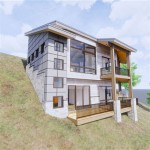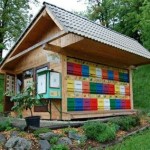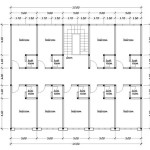Swallow Bird House Plans
Swallows are beneficial birds, consuming vast quantities of flying insects, making them welcome guests for many homeowners. Providing suitable housing can encourage these aerial insectivores to nest nearby. Building a swallow house requires understanding their nesting preferences and providing a structure that mimics their natural nesting sites. This article explores the basics of swallow bird house plans, covering important considerations for design, placement, and maintenance.
Key Considerations for Swallow Bird House Plans
Several factors influence successful swallow house occupancy. Addressing these elements in the planning stages increases the likelihood of attracting swallows.
- Swallow Species: Different swallow species have varying preferences for house shape and entrance size.
- Placement: Swallows prefer open areas with clear flight paths to and from the house.
- Mounting: Secure mounting is essential to withstand weather and predator activity.
- Material: Choose durable, weather-resistant materials like wood, PVC, or concrete.
Choosing the Right Plan for the Right Swallow
Not all swallow houses are created equal. Different swallow species exhibit specific nesting preferences, and selecting the appropriate house design is crucial for attracting the desired species.
- Barn Swallows: Open-fronted, cup-shaped nests are preferred by barn swallows. These houses often resemble a half-cup or shelf affixed to a backing board.
- Cliff Swallows: Gourd-shaped or enclosed houses with small entrance holes suit cliff swallows, mimicking their natural mud nests built on cliff faces.
- Purple Martins: Multi-compartment houses, often referred to as “martin houses” or “apartment houses,” cater to the colonial nesting habits of purple martins. These houses offer numerous individual compartments within a larger structure.
Material Selection and Construction
The materials used in constructing a swallow house significantly impact its longevity and the swallows' comfort. Careful material selection is vital for a successful project.
- Wood: Untreated wood, such as cedar, cypress, or pine, provides excellent insulation and a natural aesthetic. Avoid pressure-treated lumber due to potential toxicity.
- PVC: PVC offers a maintenance-free option, resistant to rot and insect damage. It requires proper ventilation to prevent overheating.
- Concrete: Concrete provides exceptional durability and weather resistance. It also offers good insulation, but it can be heavier to mount.
Placement and Mounting for Optimal Occupancy
Strategic placement and secure mounting are critical for attracting swallows and ensuring their safety. Consider the following factors before installing a swallow house.
- Height: Mount houses at least 10-15 feet above the ground, away from easy access by predators.
- Open Space: Swallows require clear flight paths to and from their nests. Avoid placing houses near trees or dense shrubbery.
- Water Source: Proximity to a water source, such as a pond, lake, or birdbath, is essential for drinking and mud collection for nest building.
- Predator Protection: Implement predator guards, such as baffles or cone-shaped metal shields, on poles to prevent climbing predators from reaching the nests.
Maintenance and Cleaning of Swallow Houses
Regular maintenance ensures the health and safety of the swallows and prolongs the life of the house.
- Cleaning: Clean out old nests at the end of the nesting season, after the young have fledged, to remove parasites and prepare for the next year.
- Repairs: Inspect the house for damage and make necessary repairs, such as replacing rotted wood or reinforcing loose components.
- Predator Control: Maintain predator guards and address any signs of predator activity promptly.
Attracting Swallows to Your New House
Even with a well-built and properly placed house, attracting swallows might require some additional effort. These strategies can enhance the appeal of the new dwelling.
- Mud Source: Provide a readily available mud source, like a small mud puddle or patch of damp soil, to aid in nest construction, particularly for cliff swallows.
- Swallow Sounds: Playing recordings of swallow calls can sometimes attract curious individuals to investigate the new housing option.
- Pre-existing Colonies: Locate the house near pre-existing swallow colonies, as swallows are more likely to nest near established populations.
Building a Swallow-Friendly Environment
Creating a welcoming environment extends beyond providing a nesting structure. These additional steps can make your property even more attractive to swallows.
- Reduce Pesticide Use: Minimize or eliminate pesticide use, as this directly impacts the swallow’s food source.
- Native Plants: Cultivate native plants that attract insects, providing a natural food source for the swallows.
- Supplemental Feeding (Optional): Offering mealworms in a shallow dish can provide an additional food source, especially during periods of insect scarcity.

Tree And Violet Green Swallow Birdhouse 70birds Plans Index

Swallow Houses Bird House Plans Kits Diy

Swallow Bird House We Have Plenty Of These Guys Around Plans Free Kits

Swallow Bird House Plans 70birds Birdhouse Index

Birdhouse Plans 7 Simple Steps With Pictures Diy Projects Patterns Monograms Designs Templates

Backyard Wildlife Birdhouses And Shelves
Wild Birds Unlimited Nature

Free Bluebird House Plans Multiple Designs

Birdhouse And Nest Box Plans For Several Bird Species The Birders Report

Tree Swallow Housing Nature








